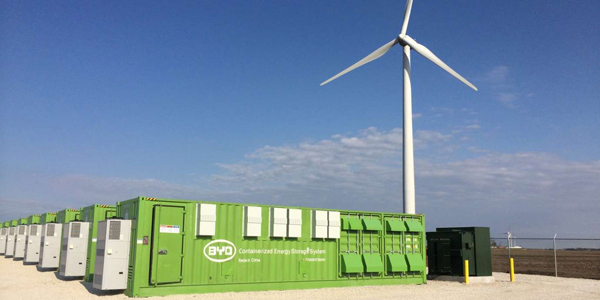By Amanda Durish Cook
MISO’s Energy Storage Task Force has been left wondering if it will help shape the RTO’s response to FERC’s sweeping storage participation order issued last month.
The task force has yet to learn its role in working with MISO staff to craft market rules to comply with Order 841, which directs RTOs and ISOs to remove barriers preventing storage from participating in energy, capacity and ancillary service markets. RTOs will be given 270 days from publication in the Federal Register to file revised tariff language with FERC outlining a participation model and another year to implement the changes.
“Frankly, we don’t know how this will affect the task force,” task force Chair John Fernandes said during a March 1 meeting. He added that MISO’s Steering Committee would have to issue a directive for the task force to begin specifically considering Order 841 compliance. Until then, the group will continue to examine what MISO rules might need to be revised or added to enable storage to participate in markets. (See MISO Staff, Stakeholders Envision Expanded Storage Participation.) Wisconsin Public Service’s Chris Plante pointed out that MISO doesn’t necessarily run compliance filings by stakeholders before they are filed with FERC.
The RTO says it will use stakeholder input on the compliance filing, although it’s not yet clear how extensively stakeholders or the task force will guide the process.
“MISO is actively working on the Order 841 compliance filing though it has not yet appeared in the Federal Register,” spokesman Mark Brown said. “While the compliance obligation lies with MISO, MISO intends to leverage its stakeholder groups to get input from stakeholders as it works through the issues as identified in the filing. This includes the Energy Storage Task Force and other stakeholder subcommittees.”
Fernandes said FERC’s order defines storage as resources that can inject into the grid, making them eligible for make-whole payments and qualification as capacity resources.
“FERC was clear that they don’t want to change market rules to accommodate storage, but they want it to be able to participate,” Fernandes said. “The idea of this order is to allow storage to participate in markets considering their operating characteristics.”
Energy Storage Association Vice President of Policy Jason Burwen said his organization is still reviewing the order to determine which storage directives are firm and which might allow more latitude.
MISO Director of Market Engineering Kim Sperry reminded stakeholders that there’s a 30-day window to ask FERC for clarification on the order.
Fernandes said it’s unlikely FERC’s rule will become effective within 90 days without delays.
“The effective date in the Federal Register assumes that all six markets say, ‘great,’ and have zero questions. The odds of that happening are between zero and zero,” Fernandes said.
He said that while Order 841 did not address storage acting as transmission, the task force will nevertheless continue to discuss MISO valuing “storage-as-wires.”
“We are going to have to go outside the bounds of Order 841 to talk about storage as transmission,” he said.
Dave Johnston, a staffer with the Indiana Utility Regulatory Commission, said he was troubled the order seems to allow distributed assets into the wholesale market, seemingly over the heads of state regulators.
“This may impede on state law,” Johnston said.
“I don’t think your concern is overblown,” Fernandes said. “I think FERC very firmly planted its flag and said the wholesale market is our sandbox.”
However, Fernandes said he didn’t think FERC intended to trample state jurisdiction. Indianapolis Power and Light’s Lin Franks said she thought FERC was simply trying to include distributed assets within the definition of storage resources.
“I think, to me, FERC did exactly what it’s supposed to do; it provided an endpoint and left it up to the RTOs how to get there, recognizing how unique each of these markets are,” Fernandes said.
FERC has ordered a technical conference for April 10-11 on whether it should treat aggregated distributed energy resources the same as it directed for storage in Order 841. (See FERC Rules to Boost Storage Role in Markets.)
IPL Complaint
Some stakeholders asked if the Order 841 compliance filing would affect the outcome of IPL’s FERC complaint against MISO’s restrictive storage participation rules, which prompted the RTO to propose revising its Tariff to include a stored energy resource type II to facilitate participation (ER17-1376). (See MISO Rules Must Bend for Storage, Stakeholders Say.) MISO planned for the new resource to be in use while it waited for a more comprehensive FERC storage rule, and some stakeholders are wondering if the filing would now become inconsequential.
MISO legal staff at the meeting said FERC must decide between accepting, accepting in part or rejecting its Tariff filing, or rendering the filing moot in favor of waiting for its Order 841 compliance filing.





